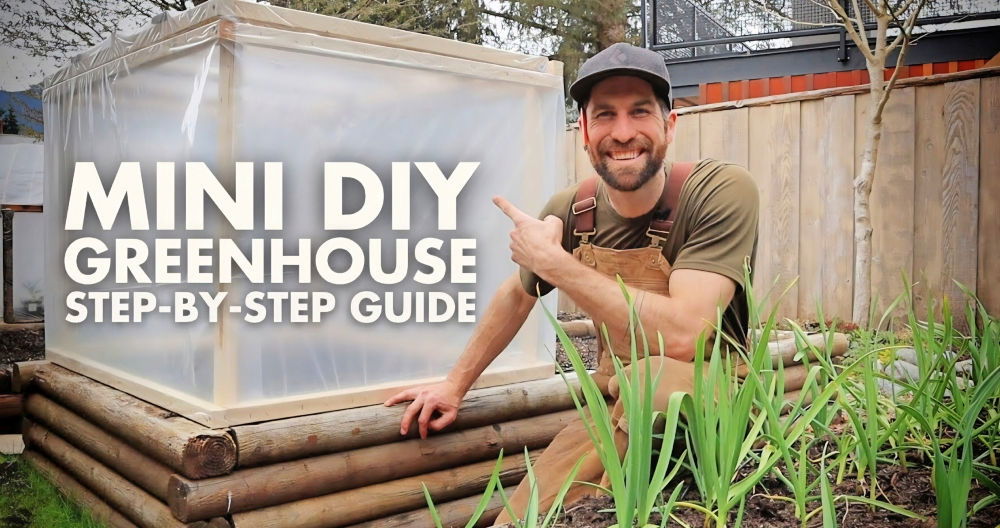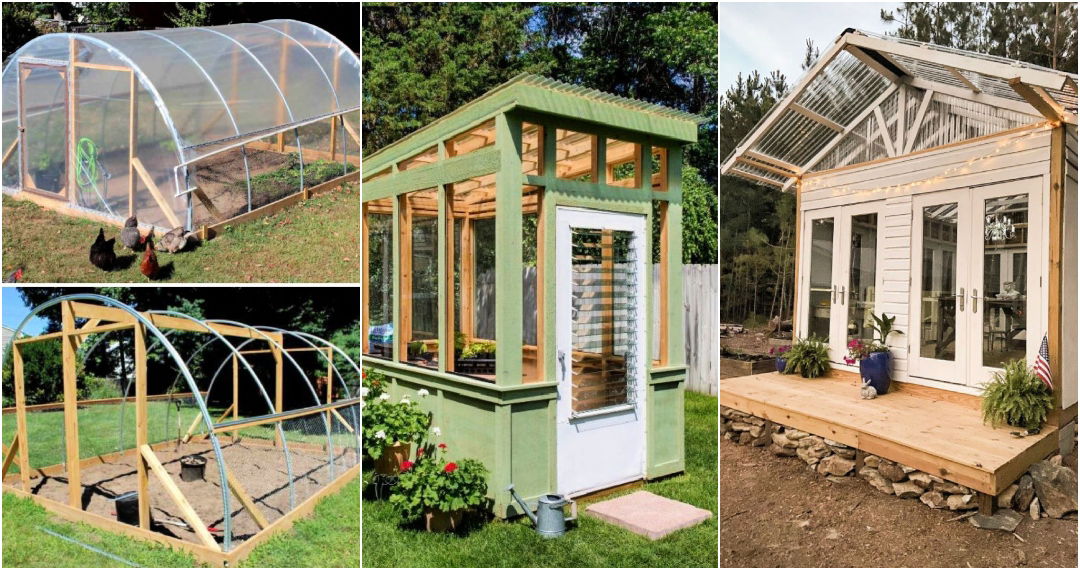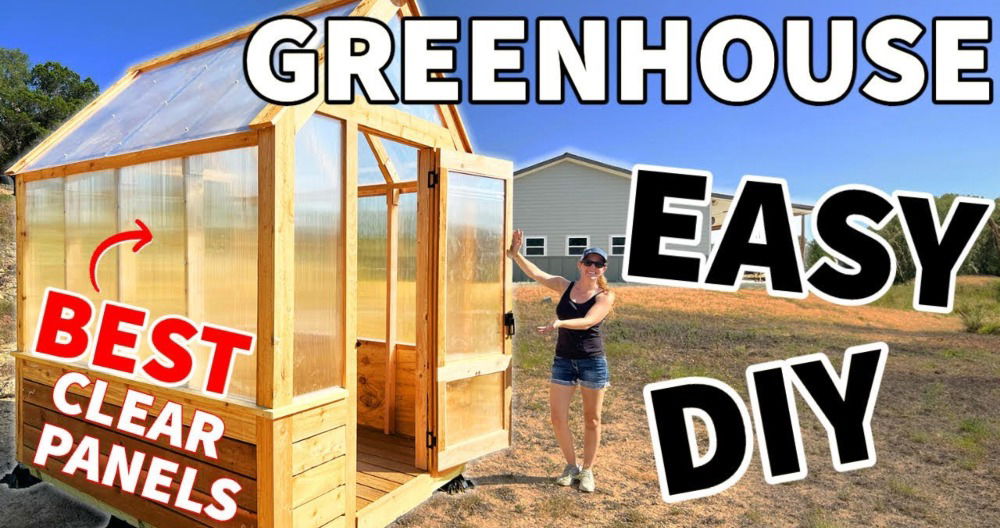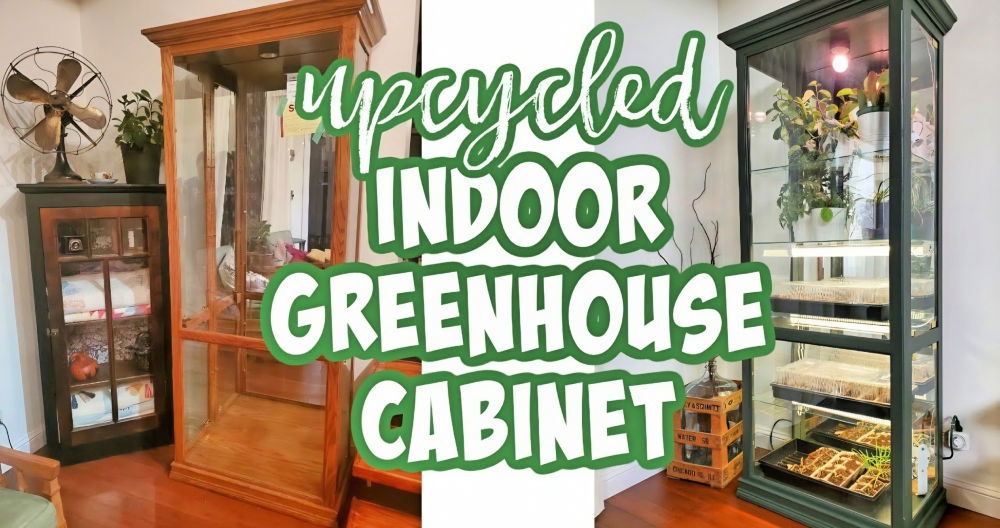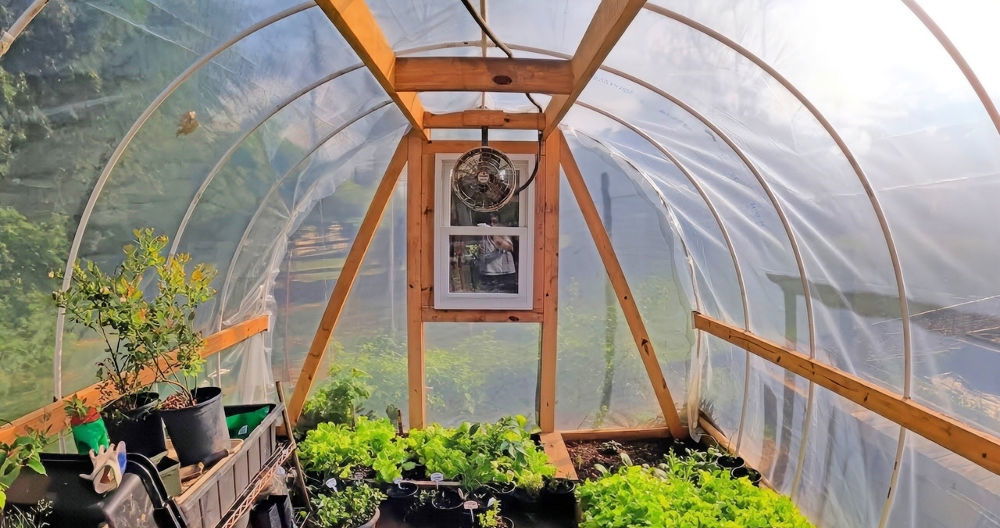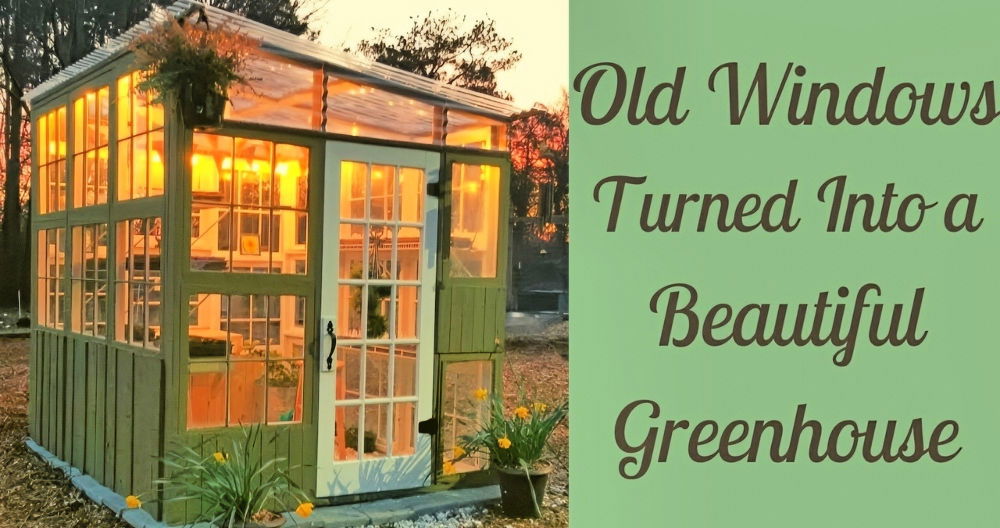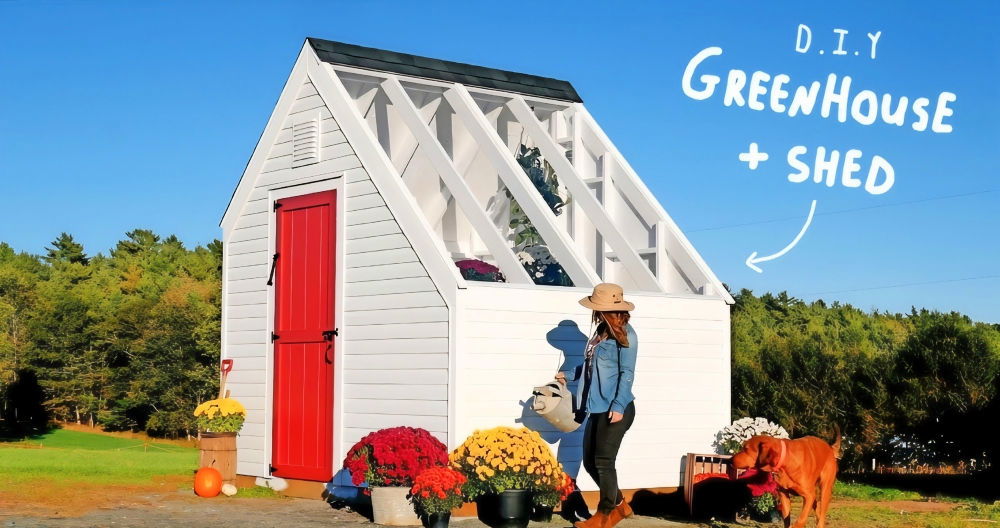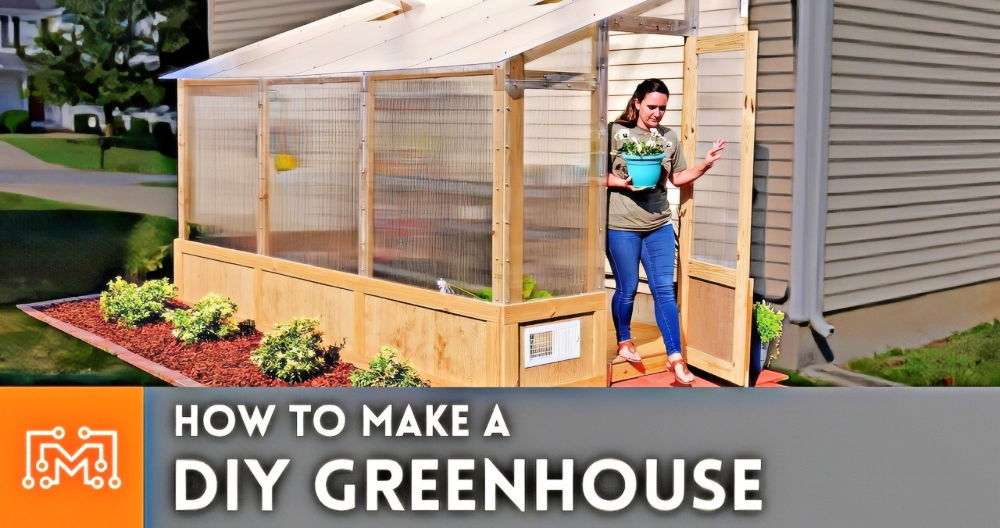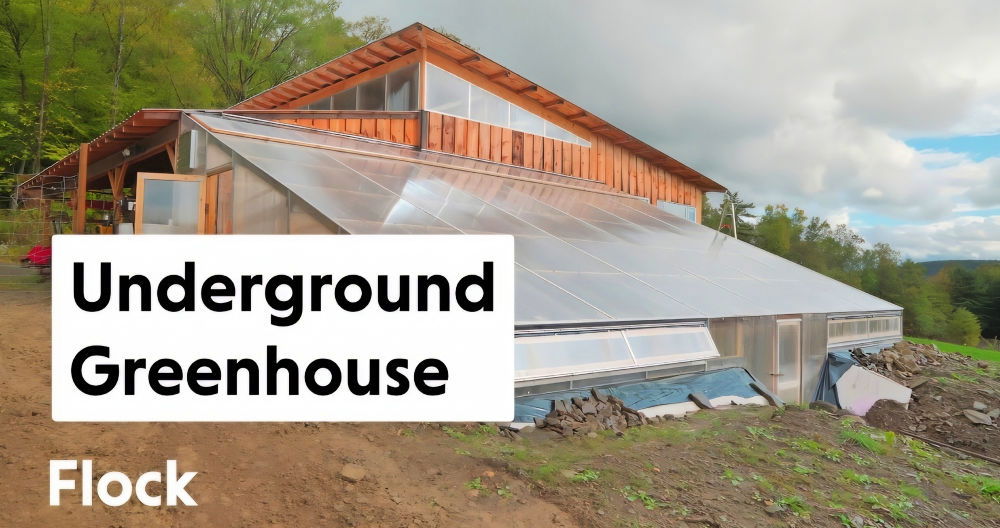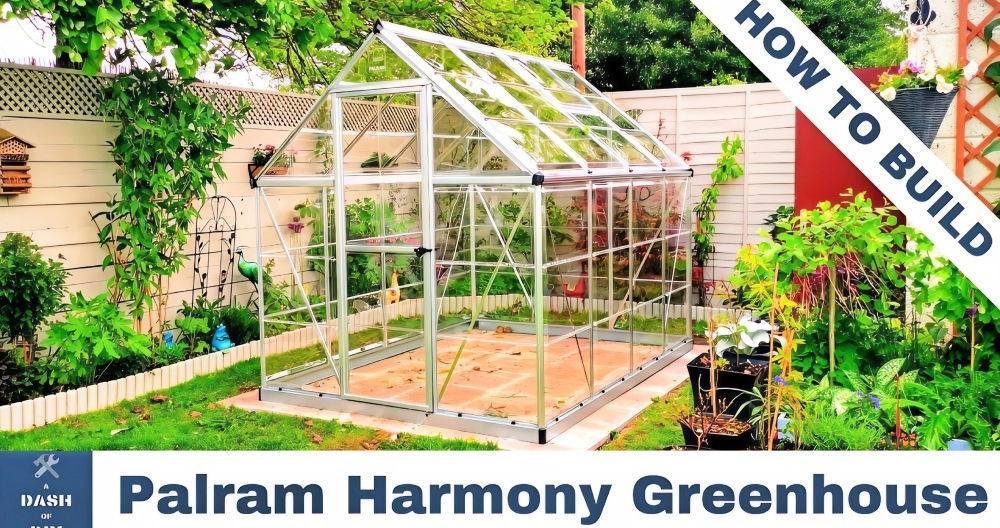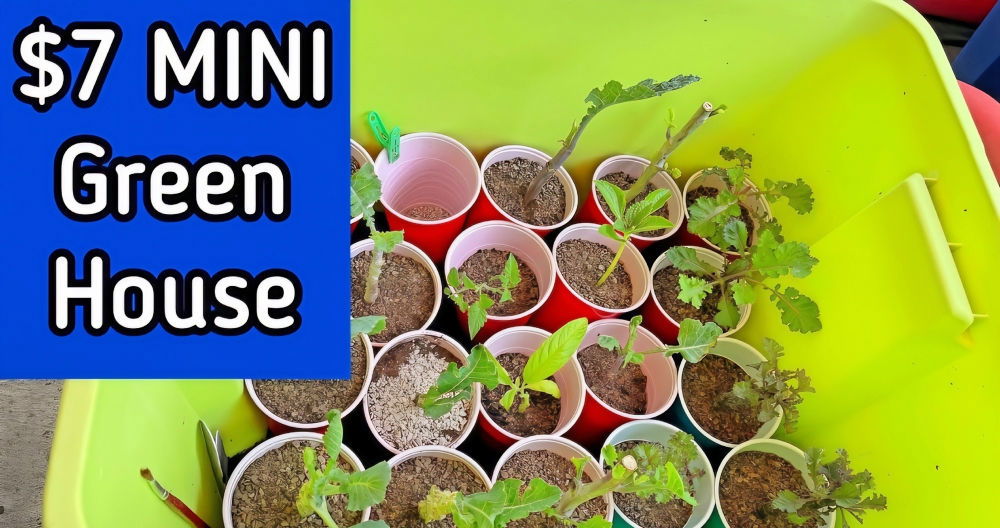Building a DIY pallet greenhouse was one of the most rewarding experiences for me. I found some free, old pallets and a few tools. I wanted a small greenhouse where I could grow plants all year for very little money. It gave me a project that was handy and useful for my gardening needs, and I felt great bringing it to life.
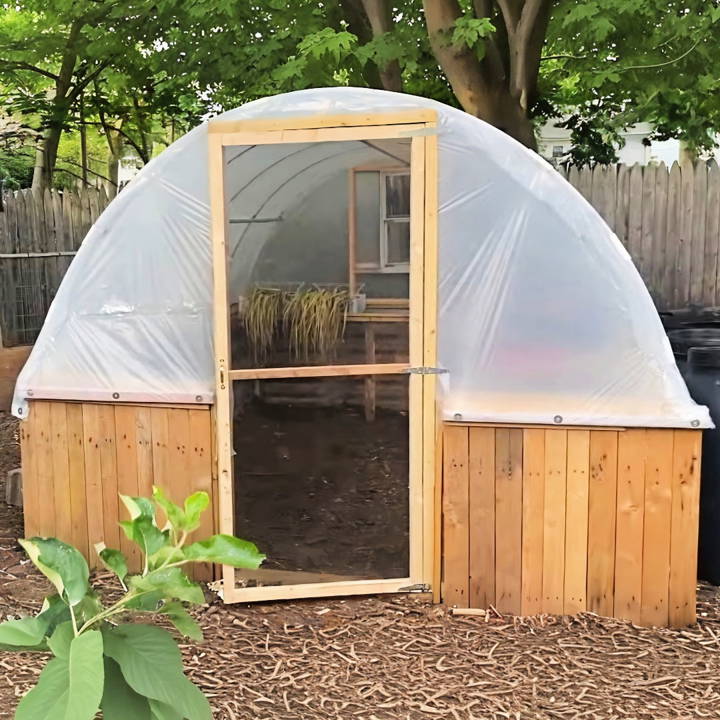
It took a little time, but seeing the pallet greenhouse stand firm was worth every moment. The structure was robust and held up well against different weather conditions.
I encourage you to start your own easy DIY pallet greenhouse. These steps will help you. I'm confident that you will find it enjoyable and useful.
Preparing the Materials
To start, you'll need several materials, which are mostly easy to find or repurpose.
- Pallets: The backbone of the greenhouse. I used around 12 pallets, but this number will depend on your desired size. Pallets are sturdy and provide a great frame.
- Plastic Sheeting: To insulate and protect the greenhouse. I opted for a 4-mil thickness for durability.
- Plywood: For the outer walls, giving extra protection and stability.
- PVC Pipes: These will form the roof's arches. They're lightweight and flexible, perfect for making a curved roof.
- 2x4 Lumbers: Used for the ridge beam and additional supports.
- Fencing Panels: I used these for siding to give it an aesthetic, weathered look.
- Tools: Including a hammer, nails, a saw, and a drill.
Each material was chosen for its functionality and availability. Pallets and plywood help provide a solid structure, while plastic sheeting keeps the interior warm. PVC pipes build a suitable frame for the roof, easily covered by the sheeting.
Step by Step Instructions
Learn how to build your own pallet greenhouse with our step-by-step DIY instructions. From laying the foundation to interior setup, we've got you covered!
Building the Frame
Learn the essential steps in building the frame: lay the foundation, wall assembly, and applying the sheeting for a strong, durable structure.
Step 1: Lay the Foundation
I began by arranging two pallets wide and three pallets long to form the base of the greenhouse. This configuration gave me approximately an 8x12 foot structure. The pallets were secured together with screws, ensuring a solid foundation.
Step 2: Wall Assembly
Using additional pallets, I constructed the walls of the greenhouse, attaching them to the base and to each other. This required careful alignment and securing with screws to ensure stability.
Step 3: Applying the Sheeting
The plastic sheeting was then draped over the frame. Starting from one end, I carefully wrapped the frame, securing the sheeting with staples to pallets and ensuring there were no gaps.
Adding Stability and Aesthetics
Learn how to add stability and aesthetics with plywood and fencing panels, build a roof, and secure arch supports step-by-step.
Step 1: Plywood and Fencing Panels
I covered the outer base of the greenhouse with plywood pieces for added insulation and stability. Then, the fencing panels were placed as cladding for an aesthetic, weathered look.
Step 2: Building the Roof
The PVC pipes were bent into arches to form the roof's structure. A 12-foot 2x4 lumber served as the ridge beam, running along the top of the arches, providing a base to secure the PVC and the plastic sheeting.
Step 3: Securing the Arch Supports
To ensure the PVC arches remained upright and secure, I attached them to both the base of the greenhouse and the ridge beam, using screws for a tight fit. This prevented the arches from collapsing under weight or wind.
Finishing Touches
Discover the final steps of ventilation and entry installation, and interior setup tips. Perfect your space with these essential finishing touches.
Ventilation and Entry
I installed a rear vent window using a spare window frame for ventilation, crucial for controlling temperature and humidity. The door was crafted from leftover lumber, fitted into a frame made from pressure-treated timber for durability.
Interior Setup
Inside, I built work tables and shelves from remaining pallets and lumber pieces. This provided space for potting plants and storing gardening tools. A layer of wood chips on the floor helped control weeds and completed the rustic look.
Constructing this greenhouse was a rewarding sustainability project, extending my gardening season and offering a new hobby space. I learned the importance of planning, especially in securing and insulating the structure.
Customization Ideas for Your Pallet Greenhouse
Building a pallet greenhouse is not just about functionality; it's also an opportunity to express your personal style and make the space truly your own. Here are some customization ideas that can help you tailor your greenhouse to your needs and preferences, all while keeping it simple and understandable.
Choose Your Palette
Color can transform your greenhouse from a purely utilitarian space to a garden feature. Consider using eco-friendly paints to add a splash of color. Light colors reflect heat, helping to keep the interior cool, while darker colors absorb heat, which can be beneficial in cooler climates.
Add Functional Decor
Incorporate shelving units made from pallets to organize pots and tools, maximizing space and maintaining a cohesive look. Hanging planters can add vertical interest and allow you to grow more in a limited area.
Personalize with Patterns
Stencil or freehand designs onto the pallet wood for a unique touch. Geometric patterns, garden motifs, or even a simple border can add character to your greenhouse.
Let There Be Light
Consider the lighting inside your greenhouse. Solar-powered LED lights are a sustainable choice and can build a warm ambiance for evening gardening.
Climate Control
For those in variable climates, consider removable panels. In warmer months, swap out a few solid panels for mesh or netting to increase airflow and prevent overheating.
Make It Smart
Integrate simple technology like a thermometer or humidity gauge to monitor the conditions inside your greenhouse. This can help you maintain the optimal environment for your plants.
Reflect Your Garden
Use the same mulch or gravel from your garden paths inside your greenhouse for a seamless transition from outside to in. This not only looks good but can also help with weed control and moisture retention.
Accessorize
Add a rainwater collection system to your greenhouse. This can be as simple as a barrel to collect runoff, which can then be used to water your plants, making your gardening efforts more sustainable.
Incorporate these ideas to build a practical greenhouse reflecting your personality and gardening style. Make choices that balance form and function for a space that's enjoyable and efficient.
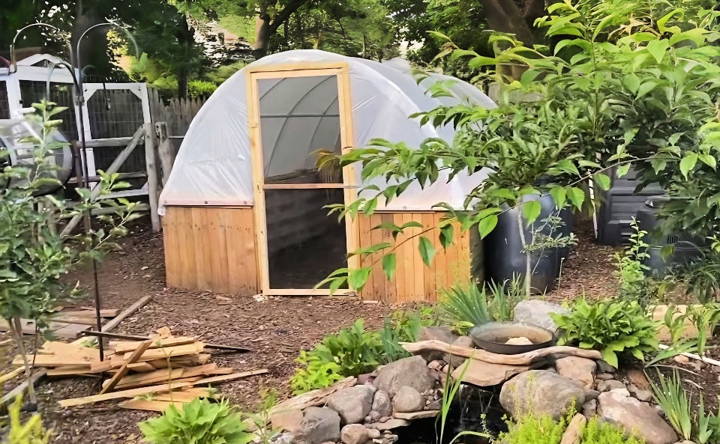
Advanced Features for Your Pallet Greenhouse
Enhancing your pallet greenhouse with advanced features can significantly improve its functionality and efficiency. Here's how you can incorporate some high-tech yet user-friendly options into your greenhouse design:
Solar Power Solutions
Harness the sun's energy by installing solar panels on the roof of your greenhouse. This renewable energy source can power ventilation fans, lighting, and even heating systems, reducing your carbon footprint and electricity costs.
Automated Watering Systems
An automated watering system can save you time and ensure your plants receive the right amount of water. Use a simple drip irrigation system connected to a timer to water your plants at regular intervals.
Temperature Regulation
Incorporate a thermostat-controlled ventilation system to maintain the ideal temperature. This can include automatic opening vents that respond to temperature changes, keeping your plants healthy in varying weather conditions.
Monitoring Sensors
Install sensors to monitor humidity, temperature, and soil moisture levels. These devices can send alerts to your phone, allowing you to keep track of your greenhouse environment remotely.
Smart Plant Care
Consider using smart plant pots with built-in moisture sensors. They can inform you when it's time to water individual plants, taking the guesswork out of plant care.
LED Grow Lights
Use LED grow lights to supplement natural light, especially during shorter days. These lights are energy-efficient and can be adjusted to provide the specific light spectrum your plants need for optimal growth.
Vertical Gardening
Maximize space by setting up a vertical gardening system. This can involve stackable planters or trellises for climbing plants, allowing you to grow more in a limited area.
Rainwater Harvesting
Collect rainwater with a gutter system attached to your greenhouse. Store the water in barrels and use it for irrigation, which is both eco-friendly and cost-effective.
Integrate these features to make your pallet greenhouse a model of sustainable, smart gardening. Keep explanations simple and instructions clear for beginners to easily follow and benefit.
Maintenance and Upkeep for Your Pallet Greenhouse
Keeping your pallet greenhouse in top condition is crucial for the health of your plants and the longevity of the structure. Here's a straightforward guide to maintaining and caring for your greenhouse:
Regular Inspection
Check your greenhouse regularly for any signs of wear or damage. Look for loose nails, rotting wood, or cracked panels. Fixing small issues promptly can prevent bigger problems later.
Pest Control
Keep an eye out for pests. Use natural deterrents like neem oil or introduce beneficial insects like ladybugs to control pest populations.
Cleaning Is Key
Clean the greenhouse glass or plastic covering to ensure maximum light penetration. A simple solution of soapy water works well. Remember to clean both the inside and outside.
Wood Treatment
If your pallets are not already treated, apply a safe wood preservative annually to protect against rot and insects. Choose a product that's safe for plants and the environment.
Ventilation
Good airflow is essential. Make sure vents and doors can open easily. Clean any debris from ventilation areas to prevent mold and mildew.
Gutter Maintenance
If you have a rainwater collection system, keep the gutters clear. This prevents blockages and ensures efficient water collection.
Seasonal Checks
Before each growing season, do a thorough check-up. Replace any broken parts and make sure the structure is stable and secure.
Organize Your Space
Keep your interior space organized. Use hooks and shelves to store tools and equipment. This not only looks better but also makes working in your greenhouse easier.
Regular maintenance keeps your pallet greenhouse productive and enjoyable, preventing issues and making the best environment for your plants.
FAQs About DIY Pallet Greenhouse
Discover answers to common questions about DIY pallet greenhouses. Learn tips, tricks, and essential info for building your sustainable garden shelter.
Select a spot that receives ample sunlight throughout the day. Consider the direction of prevailing winds and try to place your greenhouse in a location that is protected from strong gusts. Ensure the area is level and has good drainage to prevent water accumulation.
Absolutely! One of the benefits of building your own greenhouse is the ability to tailor it to your space and needs. You can make it as small or as large as you want, just ensure you have enough pallets and plastic sheeting to cover the structure adequately.
The difficulty level varies based on the design and size of the greenhouse. However, with basic tools and a straightforward plan, even beginners can successfully build a functional pallet greenhouse. There are plenty of resources and guides available that provide step-by-step instructions.
Building your own pallet greenhouse is eco-friendly, as it repurposes materials that might otherwise be discarded. It's also cost-effective since pallets can often be obtained for free or at a low cost. Additionally, it allows you to grow plants year-round, regardless of the weather outside.
Proper ventilation is crucial for regulating temperature and providing fresh air for your plants. You can achieve this by:
Installing vents: Place vents at the highest point to allow hot air to escape and at the lower sides for cool air to enter.
Using a fan: A small solar-powered fan can help circulate air and prevent overheating.
Monitoring temperature: Keep a thermometer inside to monitor the temperature. On hot days, you may need to open the door or roll up the sides of the plastic sheeting to cool it down.
Conclusion
Wrapping up, making a DIY pallet greenhouse for cheap is an excellent way to start gardening. With just a few pallets and some creativity, you can enjoy fresh vegetables and beautiful plants all year round. Building a DIY pallet greenhouse not only saves money but also adds a personal touch to your garden. Happy building and gardening!


